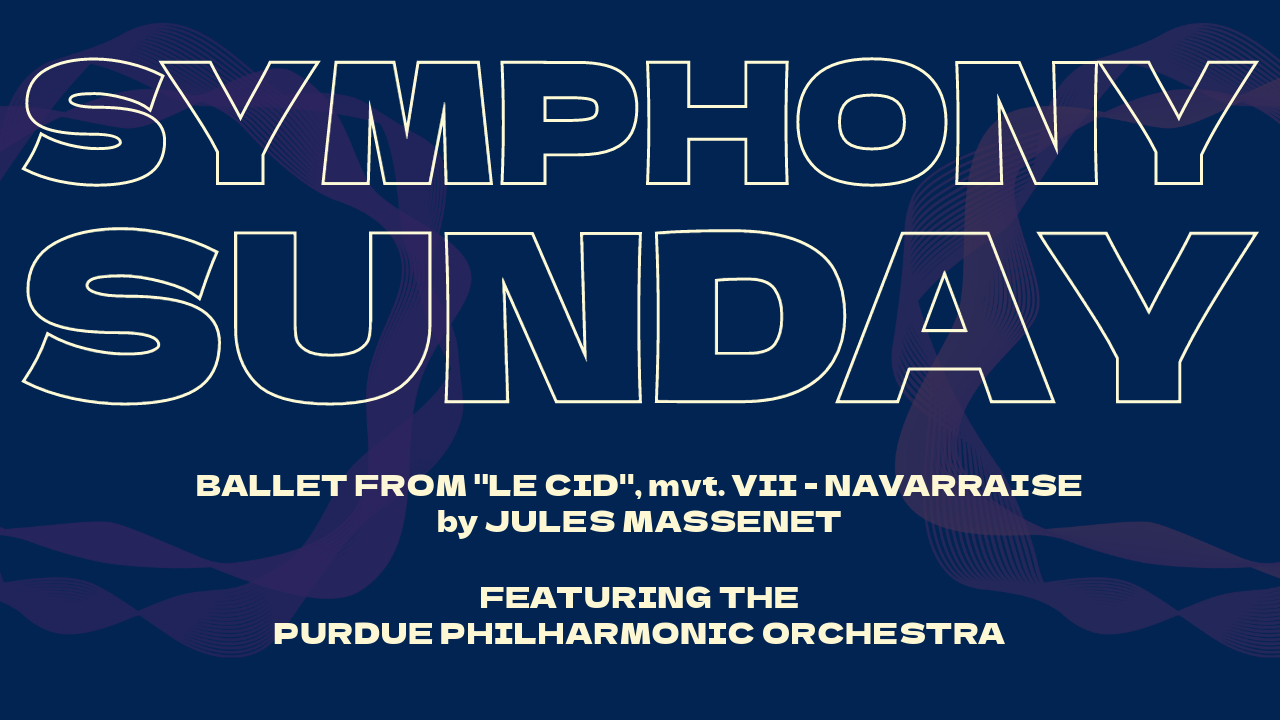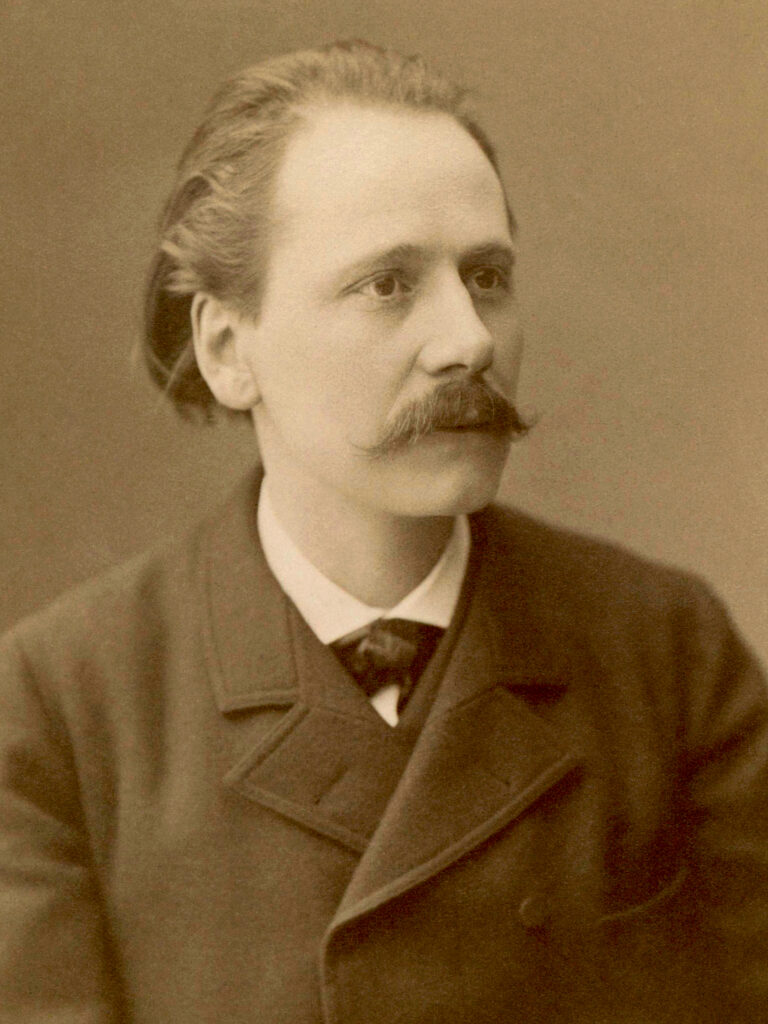Symphony Sunday – Navarraise from Le Cid by Jules Massenet

Symphony Sundays aims to share some of the greatest recent performances given by our indoor ensembles. Our first post features the Purdue Philharmonic Orchestra, directed by Professor Adam Bodony, performing the Ballet Suite from “Le Cid”, mvt. VII – Navarraise by Jules Massenet. This piece was recorded live on February 16th, 2024 at the Long Center for the Performing Arts in Lafayette, Indiana.
Unsurprisingly, the works of Jules Massenet are a cornerstone of French Romantic opera, with some sources crediting over forty to his name. A young piano prodigy, Massenet entered the Paris Conservatoire at the age of nine. Under the tutelage of composer Ambroise Thomas, he won the prestigious Prix de Rome, whose previous winners included Hector Berlioz, Charles Gounod, Georges Bizet, and Ambroise Thomas himself. After his time in Rome, Massenet returned to Paris, where he was commissioned to write the one-act opera La grand’tante for the Opéra-Comique and his First Suite for Orchestra for the Pasdeloup Orchestra. It was in 1870 that Massenet volunteered in the Franco-Prussian war with fellow composer and friend Bizet, an experience so “utterly terrible” that he wrote nothing of it in his memoirs.
It was not until after the war that Massenet began to see success with works like his oratorio Marie-Magdeleine and his grand opera Le roi de Lahore, inspired by the ancient Indian epic, the Mahabharata. Soon after came a work widely considered one of his masterpieces, Manon, based on the Abbé Prévost novel L’Histoire de Manon Lescaut. Massenet’s other great works include Werther and Thaïs, after novels by Goethe and Anatole France, respectively. Although Massenet’s other operas and works are rarely performed in more recent times, his Méditation intermezzo from Thaïs for solo violin and orchestra, as well as the orchestral piece Le dernier sommeil de la Vierge from his oratorio La Vierge are still in popular repertoire.
Navarraise, not to be confused with Massenet’s opera La Navarraise, is part of the ballet suite from his opera Le Cid. Based on a play by Pierre Corneille about the legendary Spanish knight from around the 11th century, it takes place in Burgos during the same period. The opera begins with Rodrigue in the court of Gormas, who is about to be knighted by the King of Castile, Alfonso VI. He is in love with Chimène, the daughter of the Comte de Gormas. The Comte expects to be named guardian and protector of the princess, or l’Infanta (who also loves Rodrigue), but instead, Rodrigue’s father Don Diègue is named the guardian. Viewing it as an insult, Gormas challenges Don Diègue to a duel. However, due to his old age, Don Diègue calls on Rodrigue to fight and kill Gormas on his behalf. Tasked with murdering the father of his beloved, Rodrigue must grapple between his love and his loyalty towards his family.
The ballet takes place in the town square during Tableau 4 of Act 2, after an aria from l’Infanta. Massenet wrote it for a prima ballerina named Rosita Mauri (1850-1923). According to many, she had a fiery personality (which included a notorious temper) that attracted many artistic individuals, including several composers and writers who created ballets for her and many artists who commonly depicted her. The ballet comprises seven sections: Castillane, Andalouse, Aragonaise, Aubade, Catalane, Madrilene, and Navarraise, each reflecting characteristic music and dance from their respective regions of Spain. The suite concludes with the Navarraise, which opens with sharp, percussive accompaniment and leads into an energetic opening of fast runs followed by powerful tutti chords. This pattern repeats, building fervor until a section of accelerating ricochet in the strings gives way to a quicker version of the previous Andalouse theme. The piece then finishes with quick, off-beat crashes and an exciting flourish.
This post was adapted from the Program Notes written by Eric Yang, violinist in the Philharmonic Orchestra, for the performance at the College Orchestra Directors Association National Conference in Nashville, Tennessee.

